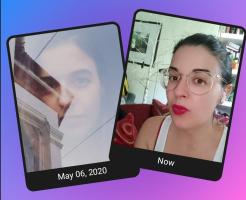Copy Link
Add to Bookmark
Report
Current Cities Volume 05 Number 12

_Current_Cites_
Volume 5, no. 12
December 1994
Information Systems Instruction & Support
The Library
University of California, Berkeley
Edited by Teri Andrews Rinne
ISSN: 1060-2356
Contributors:
John Ober, Margaret Phillips,
Richard Rinehart, Teri Rinne, Roy Tennant
Electronic Publishing
"Policy, Issues, and Networked Information" Serials Review 20(3)
(1994):7-37. -- This issue has a special section of four articles
devoted to the broad topic of the title:
* Bailey, Charles W., Jr. "Scholarly Electronic Publishing on
the Internet, the NREN, and the NII: Charting Possible Futures" --
Bailey discusses various models of scholarly electronic publishing,
goals for an electronic publishing system, the role of commercial
publishers, and what will be required to build a network-based
scholarly publishing system.
* Jankowska, Maria Anna. "Printed Versus Electronic: Policy Issues
in the Case of the Environmental Journal"
* Lynch, Clifford A. "Scholarly Communication in the Networked
Environment: Reconsidering Economics and Organizational Missions"
-- Lynch begins by discussing the changing economics of publication
in the networked environment, followed by a look at various missions
of organizations involved in publishing (not all are commercial
outfits), and then wraps up with a discussion of new models of
information dissemination.
* Reich, Vicky and Mark Weiser. "Libraries are More Than
Information: Situational Aspects of Electronic Libraries" -- Reich
and Weiser argue that libraries provide much more than information,
and that therefore any consideration of electronic libraries should
pay heed to the situational functions libraries serve in our
communities.
In addition, should you wish for a case study, you need go no
further than a separate article in the same issue:
* Willis, Katherine, et.al. "TULIP - The University Licensing
Program: Experiences at the University of Michigan" -- A
description of how the University of Michigan provided access
to the set of journals provided to them and other research
universities in electronic form. Although it may be more instructive
to compare all nine research library projects to provide access
to these journals, as no two are entirely alike, the University of
Michigan experience is nonetheless useful as a case study. -- RT
Hypermedia and Multimedia
Popovic, Mike. "Get Your Macintosh Organized" Imaging Magazine
3(12)(December 1994):34-43. -- Many libraries and museums may
already have several Macintosh workstations, and maybe even a
scanner in the design office. They may still hesitate at
creating a full-fledged imaging system because it implies buying
new Unix workstations and training staff in a new operating
system as well as new imaging database managers (in addition to
the image manipulation software such as Photoshop). The hurdle
is not so immense actually, and there are several serviceable
options for creating an image database without a lot of money.
This article reviews many of the commercial options specifically
for the Mac (but also DOS) platforms for creating imaging
workstations and management servers using regular desktop Macs.
As is usual with Imaging Magazine, they are thorough with the
details and contact information. -- RR
Pinchbeck, Daniel. "State of the Art" Wired 2(12) (December 1994)
:157-8, 206-8. -- This article explores the impact of digital
technologies on the art world, specifically on the traditional
forums for art sale and viewing - galleries and museums. The
author goes a step beyond describing the Internet as a mere
publication forum for museum events and exhibits, to describing
it as a medium for the creation of new kinds of art. It is this
new, conceptual and digital art that he argues will profoundly
affect an art community centered around the sale and view of
unique, monolithic "masterworks". The apocolyptic effect is
perhaps overstated in that many artists will of course continue
to create unique physical pieces. He does note however that the
Internet will allow a new open and non-formal forum for
disseminating this new art, and predicts that while galleries
will shy away from such art as non-salable, museums may take the
lead in 'hosting' such art in keeping with their more educational
mission. -- RR
Networks and Networking
Gillespie, Robert G. "Everything You Always Wanted to Know About
Internet Pricing (But Were Afraid to Ask)" Educom Review 29(6)
(November/December 1994):42-43.
Roberts, Michael. "Why is the Internet so Cheap?" Educom Review
29(6) (November/December 1994):6-8.
-- Taken together these two articles satisfy the curiosity that
nearly all Internet users express one time or another - "who pays
for all of this?" Roberts' article clearly enumerates the
attributes that make the Internet inexpensive. In so doing he
usefully compares the Internet to the telephone network and also
warns us of changes that will threaten the historic pricing
structure regardless of public policy decisions and debate.
Gillespie presents his material as a series of questions and
answers, the first of which explains the distribution of real
costs in academic institutions where use appears as if it is
"free." -- JLO
Jones, Russ. "Creating Clickable Image Maps" _Ora.com_ O'Reilly
& Associates, (Fall 1994):6-8. -- This "feature article" from
O'Reilly's catalog is actually an excerpt from their new book
_Managing Internet Information Services_ by Cricket Liu, et al.
The straightforward text is basically a tutorial covering one of
the most complex yet powerful features of html and World-Wide Web
documents--in-line clickable images. The demand is rising for
accessible, high-quality information about creating Web resources,
and, in typical O'Reilly fashion, this article and the book from
which it is excerpted arrives in timely response. A complimentary
copy of the catalog can be requested from catalog@ora.com. An
electronic version of the catalog and the article can be found at
[http://www.ora.com/] -- JLO
Pasicznyuk, Robert W. "Internet Resources for the Space Sciences"
College & Research Libraries News 55(11) (December 1994):725-26.
-- NASA's commitment to making information as widely available as
possible means that there is an unusual wealth of information
sources in the space sciences available on the Internet. These
sources include a wide array of text, auditory and graphic
information. As a general guide to resources on the space sciences,
this article provides references to both multimedia information
centers and relevant news and discussion groups. -- MP
Schankman, Larry. "How to Become an Internet Power User" College &
Research Libraries News 55(11) (December 1994): 718-721. -- Despite
its mock inspirational tone, this article provides practical
guidelines that information professionals should follow in order to
consider themselves Internet savvy. The author suggests, among other
things, that librarians should maintain a positive attitude about
the quantity and diversity of information on the Net and should keep
up-to-date on the emerging technologies and issues related to it.
An accompanying sidebar includes references to Internet guides that
can be downloaded as well a list of Internet lists and other
resources for keeping up-to-date. -- MP
Weider, C. and P. Deutsch. "A Vision of an Integrated Internet
Information Service" Request For Comments (RFC) 1727. Available at RFC
repositories including anonymous ftp at nis.nsf.net(ftp://nis.nsf.net/
internet/documents/rfc/rfc1727.txt). -- This is an excellent document
to read for those who would like to have a window into the process of
developing Internet protocols. Produced by the Integration of Internet
Information Resources Working Group of the Internet Engineering Task
Force, the document lays out a vision of how services might be
integrated over the next few years. There is a mixture of plain talk
about functionality with details about requirements that would have to
be met in order to realize an integration of Internet services. The
document gives those who wonder about future developments some useful
facts to ponder as well as an insight into how such discussions are
codified and put into the protocol development stream. -- JLO
Optical Disc Technology
Fritz, Mark. "CD-i: The Training Machine?" CD-ROM Professional 7(6)
(November/December 1994):125-135. -- Fritz poses the question "Is
CD-i (Compact Disc-interactive) a dodo breathing its last breath or
a phoenix on the rise?" in this frank and comprehensive overview of
the technology's training applications. Recently a number of large
companies, such as Chrysler, Johnson & Johnson, Proctor & Gamble,
Kentucky Fried Chicken, and Texaco have joined together in an
ambitious CD-i production and distribution co-op. CD-i is a
particularly attractive option as a training platform/medium because
it is portable, the CD-i players can be plugged into the ubiquitous
television set, and it delivers both video and interactivity. -- TR
Guenette, David R. and Paul Nicholls. "CD-ROM and Multimedia Industry
Newsletters" CD-ROM Professional 7(6) (November/December 1994):154-161.
-- The authors have compiled a resource directory covering CD-ROM and
multimedia industry trade newsletters. "Industry" is defined to
include the CD-ROM publishers, developers, distributors, investors,
and all others involved in some part of the process of planning,
financing, creating, producing, promoting, and selling CD-ROM, as
well as the information profession working in libraries, information
centers, and MIS, and marketers and advertisers, trainers, and
educators who use CD-ROM and multimedia titles professionally. The
authors encourage the reader to view a newsletter as falling some-
where between a publication and a consulting company, with subscribers
as the clients. A short description of the newsletter and its intended
audience along with subscription and price information is included
for each entry. -- TR
Kalstrom, David. "CD-Recordable: The New Storage Medium for Business
and Pleasure" CD-ROM Professional 7(6) (November/December 1994):
106-112. -- Focusing more on the business aspects of CD-R, Kalstrom
writes a very strong endorsement for the use of CD-R for data
archiving. While economies of scale were the driving force behind
CD-ROM production and distribution, the advent of CD-R has made it
economically feasible for almost any type of application, regardless
of the number of the discs produced. The author contends that as the
cost of CD-R hardware continues to drop, it will become more readily
accepted as a general-purpose archiving and back-up medium that will
compete head-on with tape, rewritable magneto-optical and even hard
disk drives. -- TR
Starr, Karen. "Top Tips From Street-Wise CD-ROM Network Managers"
CD-ROM Professional 7(6) (November/December 1994):145-147. -- Starr
compiles an extremely practical and useful set of tips from six
seasoned CD-ROM network managers. Learn from the triumphs and mis-
takes of these network sages. -- TR
General
Laribee, Janet F. and Carl L. Lorber. "Electronic Resources: Level
of Awareness and Usage in a University Library" CD-ROM Professional
7(6) (November/December 1994):137-144. -- Laribee and Lorber present
and analyze the results of a survey recently conducted at Eastern
Illinois University's Booth Library to determine the level of
awareness, usage, and general impressions of the library's electronic
resources among faculty and administrators. The results of the study
yielded two major findings: 1. a low level of awareness of some of
the electronic resources and 2. a slight degree of dissatisfaction
with the training and documentation on the usage of the electronic
resources. The authors follow-up with a literature review of library
instruction targeted at faculty and a list of practical program goals
based upon the findings of the survey. -- TR
------------------------------------------------------------------------
Current Cites 5(12) (December 1994) ISSN: 1060-2356 Copyright (C) 1994
by the Library, University of California, Berkeley. All rights reserved.
All product names are trademarks or registered trademarks of their
respective holders. Mention of a product in this publication does not
necessarily imply endorsement of the product.
To subscribe, send the message "sub cites [your name]" to
listserv@library.berkeley.edu, replacing "[your name]" with your name.
Copying is permitted for noncommercial use by computerized bulletin
board/conference systems, individual scholars, and libraries. Libraries
are authorized to add the journal to their collections at no cost. An
archive site is maintained at ftp.lib.berkeley.edu in directory
/pub/Current.Cites [URL:ftp://ftp.lib.berkeley.edu/pub/Current.Cites].
This message must appear on copied material. All commercial use requires
permission from the editor, who may be reached in the following ways:
trinne@library.berkeley.edu // trinne@ucblibra // (510)642-8173
-------------------------------------------------------------------------






















